The U.S. Air Force has formally proposed moving its main F-22 stealth fighter training unit to Langley Air Force Base in Virginia, which could put more than a third of the total Raptor force at just one base. The announcement comes as the service warns that it needs additional funds to keep repairs going at Tyndall Air Force base in Florida, still officially the F-22 training hub, which suffered devastating damage from Hurricane Michael last year.
The Air Force formally designated Langley, technically part of Joint Base Langley-Eustis, as its preferred future home of the F-22 Formal Training Unit (FTU) on Mar. 25, 2019, but only publicly announced this decision two days later. The 43rd Fighter Squadron had served as the FTU at Tyndall until Hurricane Michael decimated that base in October 2018, forcing it to move to nearby Eglin Air Force Base, which is also in Florida. Tyndall’s 95th Fighter Squadron, an operational unit, had sent its Raptors to various other bases across the country, including Langley.
“The permanent solution must address readiness and pilot production by ensuring the F-22 FTU is set up at a location that optimizes readiness and supports the secretary of defense’s requirement to improve mission capable rates to 80 percent,” U.S. Air Force spokesman Robert Leese said in a statement on Mar. 27, 2019.
The service still has to conduct environmental impact analyses and other studies to demonstrate that Langley can support the mission and what improvements might be necessary to ensure that it can. This is a process that can last multiple years.
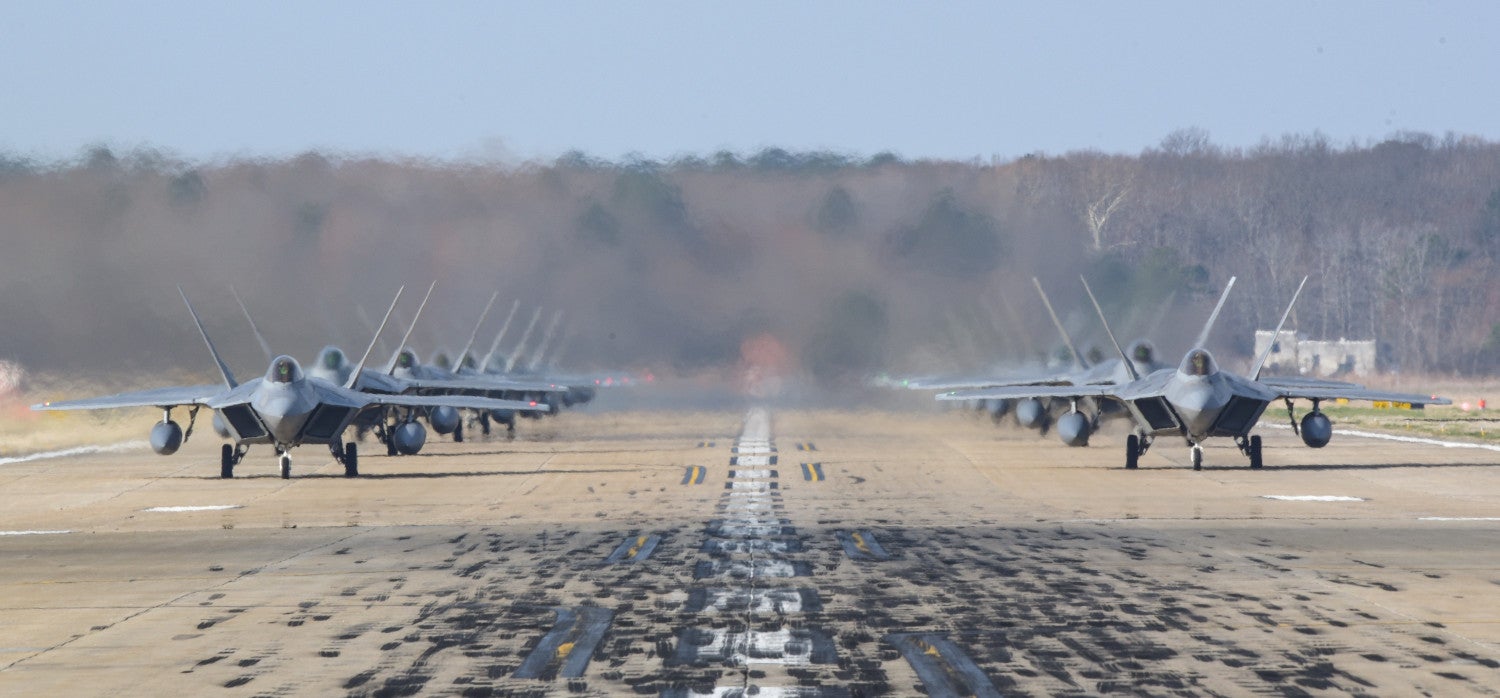
Re-establishing the FTU at Langley – which may or may not continue to be known as the 43rd Fighter Squadron – involves more than just moving the F-22s. At Tyndall, prior to Hurricane Michael, the 372nd Training Squadron, Detachment 4 supported the 43rd’s operations. The 2nd Fighter Squadron had also provided dedicated adversary support with its T-38 Talons. Both of those units followed the 43rd to Eglin after the storm.
Tyndall is also home to the physical F-22 schoolhouse facilities, including simulator facilities. The Air Force will need to move all of that to Langley to support the activities of the FTU.
Langley does already host two squadrons of Raptors assigned to the 1st Fighter Wing, the 27th and 94th Fighter Squadrons, but it could still require additional supporting facilities and maintenance capacity, to host the added F-22s and T-38s. Among other things, the stealth fighters’ need climate-controlled hangars to support the maintenance required for their specialized radar-absorbing coatings. The first two F-22s returned to Tyndall on Mar. 1, 2019 – specifically for routine maintenance.
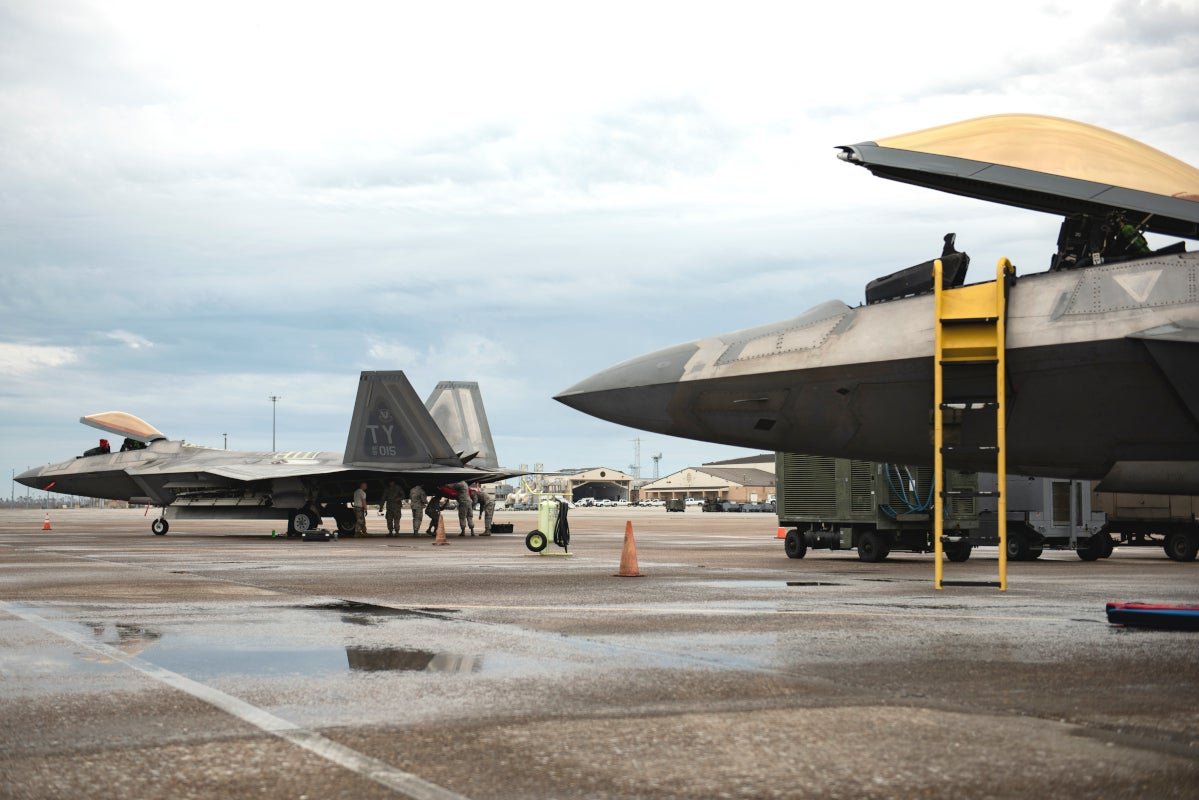
As of 2018, the 1st Fighter Wing had 46 of the stealth fighters, while the 43rd Fighter Squadron had another 31, according to the Government Accountability Office (GAO). With less than 185 Raptors still in service, the move would not only make Langley the new F-22 training hub, but the single largest Raptor base in the country.
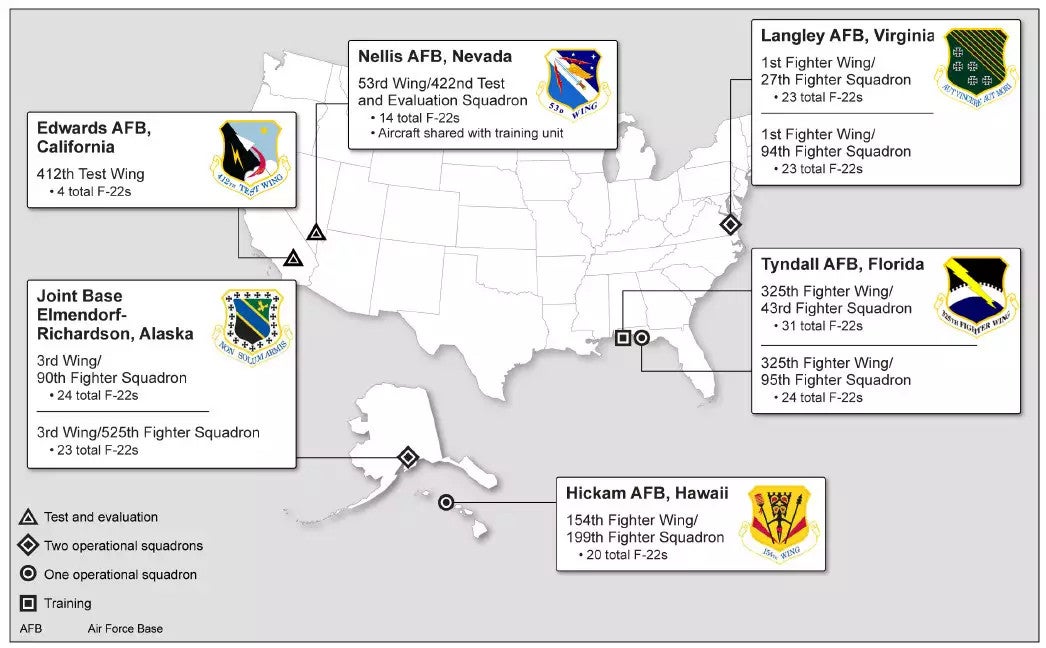
This would certainly restore some of Langley’s past glory, too. Presently home to just two F-22 squadrons, it had been a major fighter base during the Cold War. The 1st Fighter Wing was the first operational unit to get the then-new F-15 Eagle in the 1970s, operating four squadrons of those jets at its peak. It was also the first operational Wing to get F-22s. The last F-15s left the Wing in 2010, leaving it both smaller and a purely F-22 unit. In 2015, a squadron of T-38s arrived to provide dedicated adversary support at the base.
The Air Force’s decision is also in line with recommendations from GAO in 2018 to consolidate more F-22s at fewer locations to improve readiness and reduce operational and maintenance costs. It could also help the service at least work toward meeting former Secretary of Defense James Mattis’ demand that the mission capable rates for the Raptors hit 80 percent by the end of the 2019 Fiscal Year, as spokesperson Leese noted. Acting Secretary of Defense Patrick Shanahan has reaffirmed this requirement.
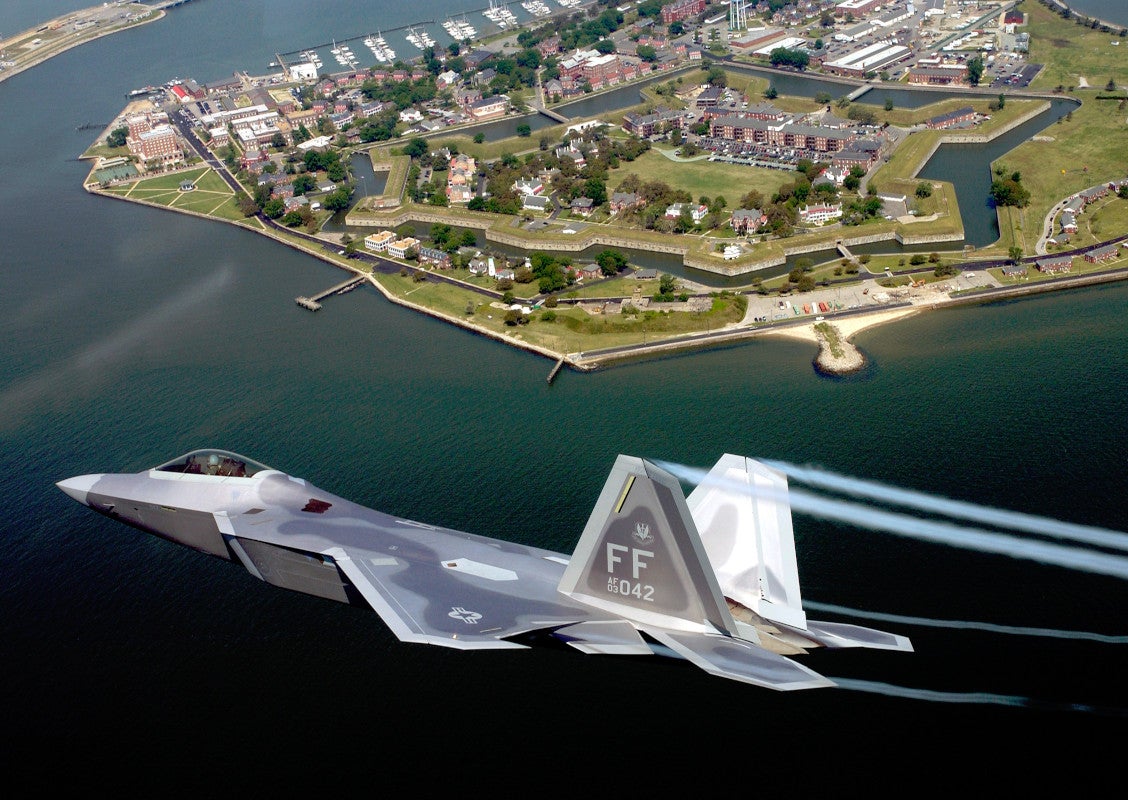
The mission capable rates for the F-22s are notoriously low, something The War Zone has explored in depth, generally hovering somewhere below 50 percent overall. Earlier in March 2019, outgoing Secretary of the Air Force Heather Wilson told members of Congress that the Raptor fleet was unlikely to meet the 80 percent goal by the end of the year, due in large part to the Tyndall disaster. Hurricane Michael struck after Mattis had issued his initial memorandum about improving fighter jet readiness.
But beyond needing to complete environmental and other studies to assess Langley’s readiness before it can proceed with the move, the Air Force will also have to convince Congress to provide the necessary funding. Legislators from Virginia had been actively advocating for the move since at least February 2019, but their colleagues from Florida could oppose the decision. Before Hurricane Michael, Tyndall had provided for around 20,000 jobs in the associated community and generated millions annually for the local economy.
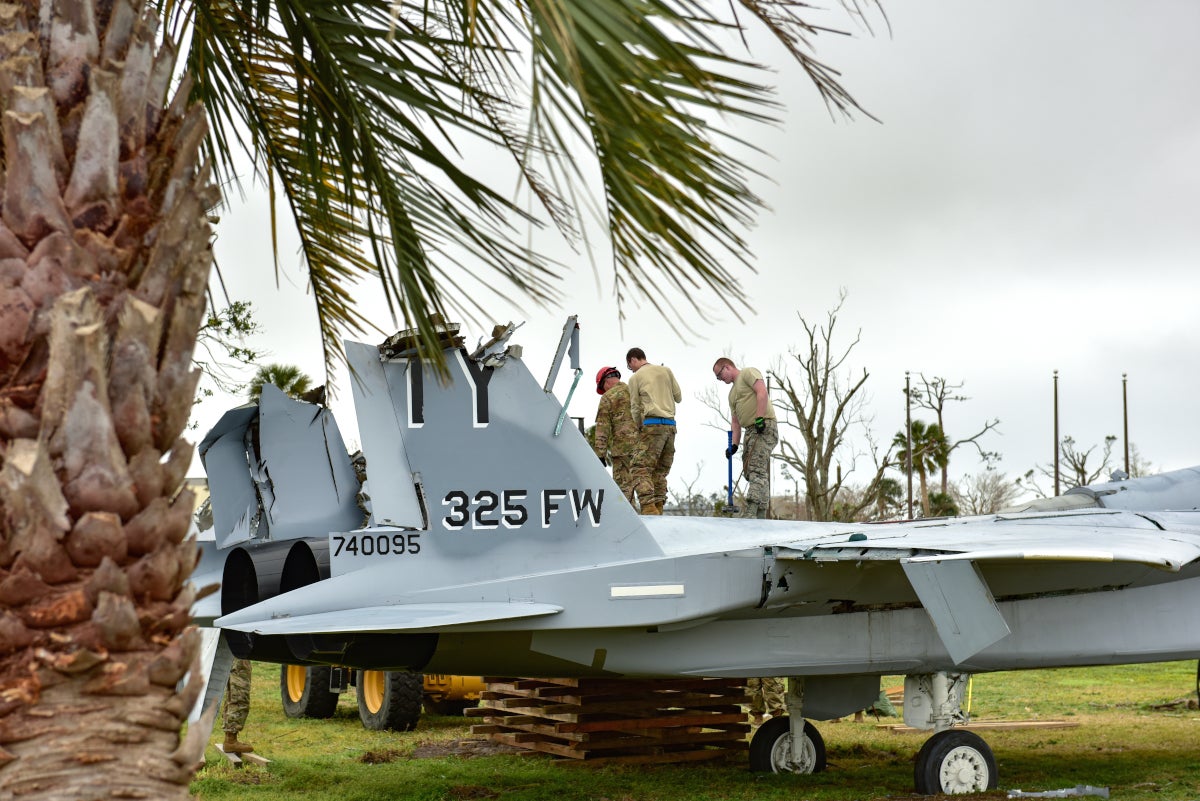
With an eye toward the potential backlash to anything that might look like a proposal to close Tyndall or otherwise shrink its operations, the Air Force has already pitched a plan to turn the Florida base into a home for as many as three squadrons of stealthy F-35A Joint Strike Fighters in the future. The Air Force has serious incentives to continue other activities at Tyndall, as well.
The base is home to QF-16 target drones and contractor-operated Mu-2 training aircraft and supports training on ranges off the coast of Florida. Maintaining these elements and providing space for visiting units to train have already made rehabilitating the base, at least to a certain degree, an imperative for the Air Force.
But turning it into an F-35 base could also take years to come to fruition. At the same time, any suggestion of trying to keep F-22 training activities at Tyndall may not even be a realistic option in the near term. Though Tyndall officially resumed flying operations months ago, the Air Force says it will take at least $3 billion over the next three year or so to complete all of the planned repairs to the base to truly return it to its previous operating capacity. In February 2019, the service warned that could all come grinding to a halt on May 1 unless Congress approves additional funding.
Legislators are looking at additional requests to support repairs at Offutt Air Force Base in Nebraska, which just got inundated by serious flooding, too. There is also a growing dispute on Capitol Hill over military construction budgets in general due to President Donald Trump’s administration's controversial plans to use some of that funding to build various barriers along the U.S. border with Mexico.
How all of this might impact Tyndall's future remains to be seen, but Langley's could be very bright.
Contact the author: [email protected]









